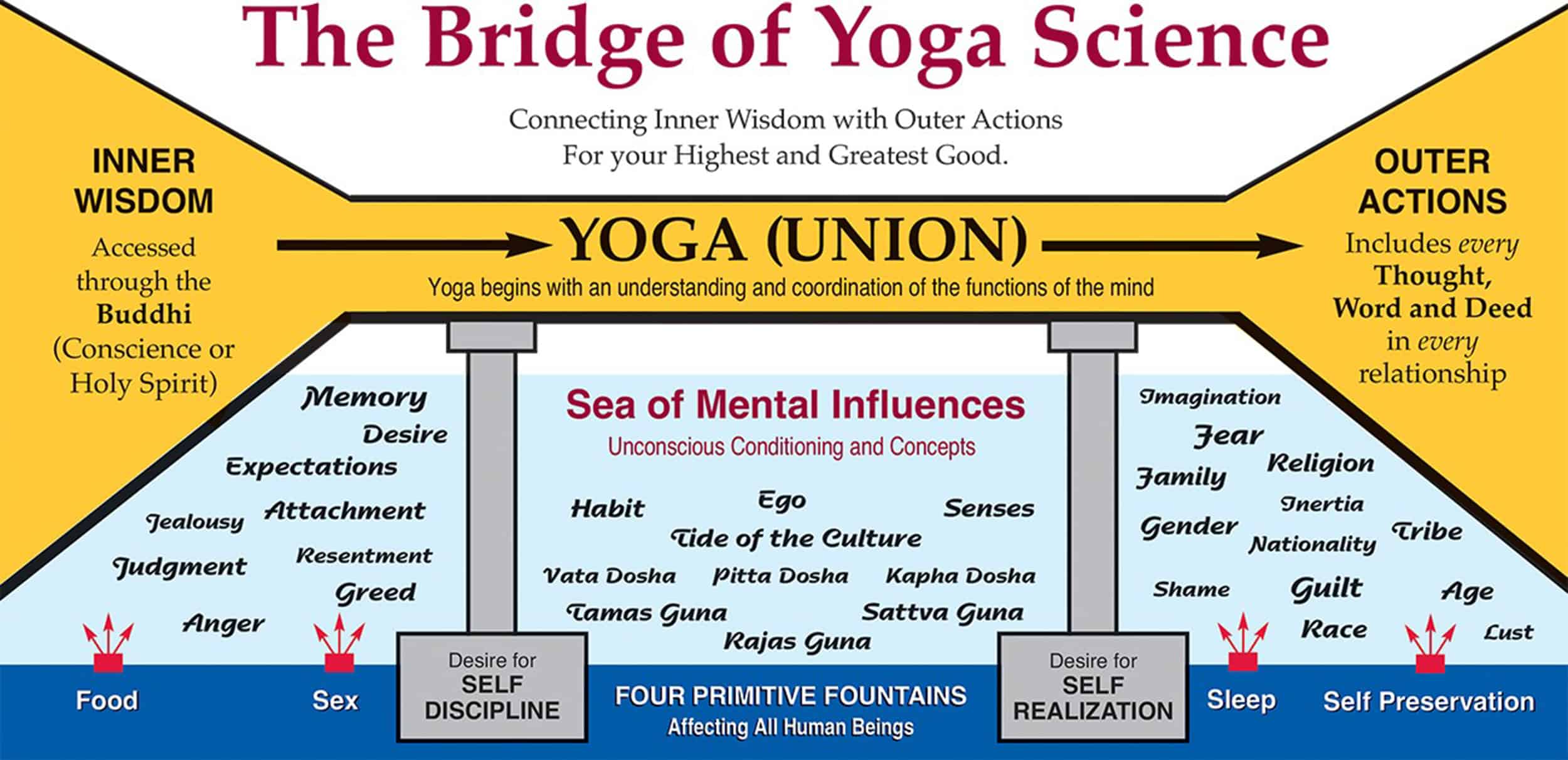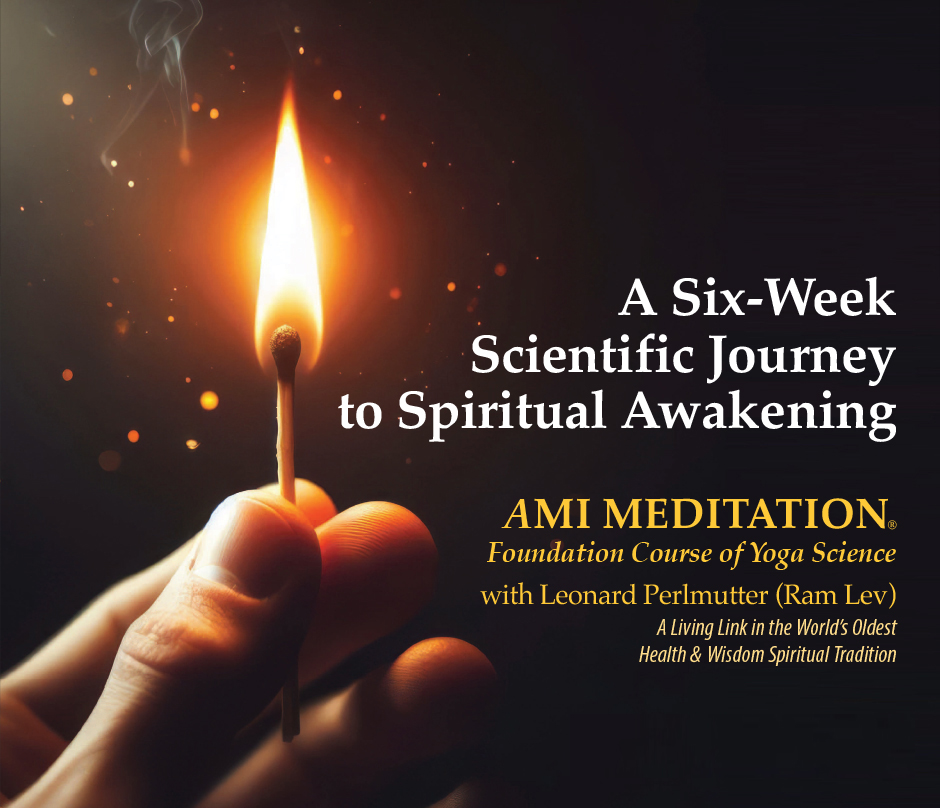Today’s Modern Challenge
Every day each one of us is asked to deal with unprecedented levels of stress and anxiety. Growing numbers of people feel emotionally unbalanced, angry, depressed, fearful and dissatisfied—all of which impacts our health and well-being and draws us farther and farther away from the spiritual center.
In trying to identify and diminish the cause of our pain, we tend to blame external factors like family, overwork, economic uncertainty, terrorism, the government, and the unresolved, cultural divisions in social and racial relationships. But unless we can regularly access the higher state of consciousness—residing at the center of our being—our currently installed faulty conditioning cannot be overcome.
Twentieth century psychologist Abraham Maslow famously stated that if the only tool you have is a hammer, you’ll treat every problem as if it were a nail. That’s what we’re doing, for instance, when we try to deal with every human challenge from within a strictly physical orientation. We’re seeing only physical solutions—which cannot be effective because our problems are not physical in origin. They are primarily spiritual and emotional in origin.
Six thousand years ago, the pioneers of modern Yoga Science dealt with stressors of their own. But instead of seeking solutions outside themselves, certain women and men embarked on a journey of self-inquiry and self-discovery. By experimenting with scientific meditation techniques, they learned how to unify the vast wisdom potential of the mind and spirit with the skillfully dynamic capacities of the body. Through their internal research, pioneering Yoga Scientists of long ago received a priceless, practical treasure that can serve us well today—if we are motivated to follow in their footsteps.

What is Yoga Science?
- Yoga Science is the oldest body of holistic mind/body/spirit medicine.
- Yoga Science provides a scientific template for accessing and employing higher knowledge, and for experiencing happiness, health and security—while helping us fulfill the purpose of life without pain, misery or bondage.
- Yoga Science serves as a framework for gathering, measuring and organizing data, making predictions, testing those predictions with repeatable experiments, and drawing conclusions.
- The conclusions derived from each Yoga Science experiment then become the basis of our daily thoughts, words and deeds to help us live and act in the world more skillfully, lovingly and rewardingly.
- The laboratory for every Yoga Science experiment is your own mind, body, sense complex.
How to Perform a Yoga Science Experiment
- You receive “higher” knowledge from the Conscience (buddhi) before you take any action (in thought, word or deed).
- You assimilate the “higher” knowledge; you become familiar with it.
- Then, in the midst of a relationship that requires an action, you test the “higher” knowledge by basing your thoughts, words and deeds on your own Inner Wisdom (received by the Conscience). To facilitate each experiment, you sacrifice any old habits that conflict with your Inner Super Conscious Wisdom.
- At the conclusion of each experiment, you experience the “higher knowledge” you received in a practical way that expands your previous horizons and your capacity for creativity in every aspect of daily living.
Eight Steps of Yoga Science
Leonard Perlmutter’s six-week AMI Foundation Course provides an experiential understanding of the traditional eight steps of Yoga Science. The entire AMI curriculum is holistically designed to incorporate Yoga Science into daily modern life. The eight steps are presented here in reverse order since the ladder being used by the Yoga Scientist begins at ground level and ascends to the culmination of union with the Supreme Intelligence.
8. Samadhi – absorption into the superconscious state or Godhead; also known as Self-realization
7. Dhyana – meditation
6. Dharana – concentration of mental energy (one-pointed attention)
5. Pratyahara – control of the senses
4. Pranayama – control of breath and prana (vital energy)
3. Asana – physical postures
2. Niyamas – constructive observances designed to organize our personal daily lives. These are:
• saucha (purity)
• santosha (contentment)
• tapas (self-discipline)
• svadhyaya (self-study)
• Ishvara pranidhana (surrender to Truth)
1. Yamas – disciplines and restraints regulating external relationships with other people as well as with one’s own body, energy and senses. These are:
• ahimsa (non-harming)
• satya (truthfulness)
• asteya (non-stealing)
• brahmacharya (conservation/moderation of energy)
• aparigraha (non-possessiveness)
AMI FOUNDATION COURSE

The foundation course for understanding and practicing Yoga Science in modern life.
Important Tools/ Benefits of the
AMI FOUNDATION COURSE
You’ll learn the following:
One-pointed attention
How to focus the mind on one thing at a time.
Detachment
How to slow down the mind by increasing the space between stimulus and response.
Discrimination
How to regularly access “higher knowledge” from the superconscious mind.
Will Power
How to find the strength to do what’s to be done, and not do what’s not to be done.
Ahimsa (non-injury, non-harming)
How to love and be loved
